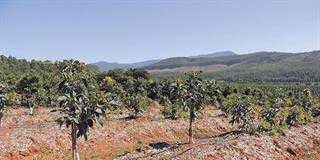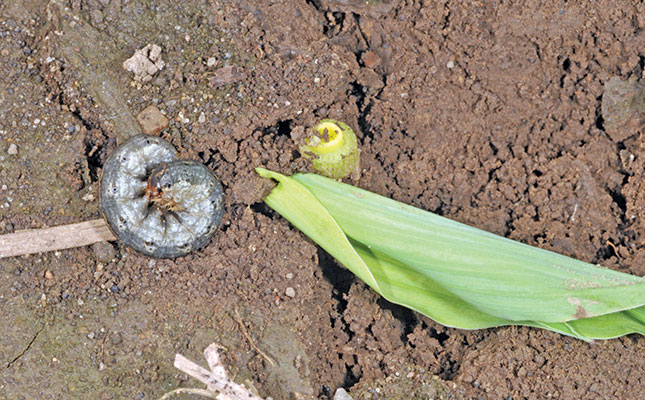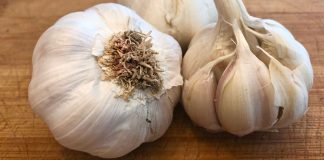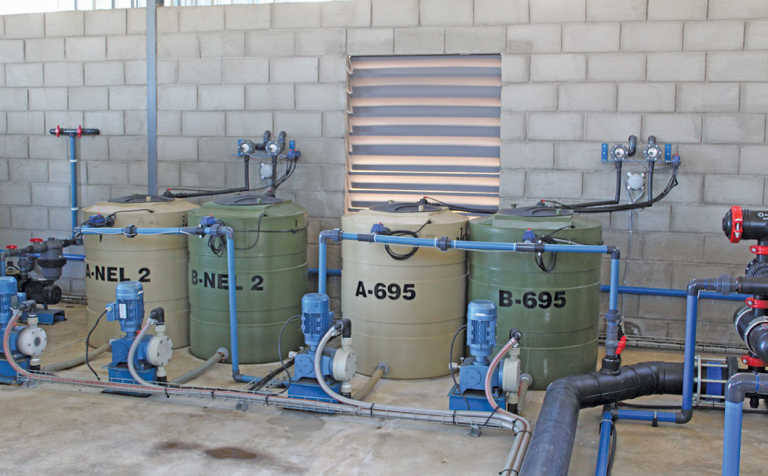
Photo: Lindi Botha
A farm’s irrigation system affects many factors that in turn determine profitability. The efficacy and efficiency of labour, electricity, water and fertiliser are all influenced by the type of irrigation system and the way it is managed.
With this in mind, Dawid de Kock, a macadamia farmer in Mbombela, Mpumalanga, has implemented a low-flow drip irrigation system on his newly established orchards. His older orchards all have micro-irrigation.
READ Know the facts before switching irrigation systems
“The Netafim TurboNet low-flow drip irrigation system delivers water at the same rate at which the plant absorbs it. This ensures that the soil moisture is at the optimal level and the tree doesn’t drown or dry out. This also ensures that there’s no run-off, evaporation or leaching of the soil,” he says.
De Kock has 140ha of mature trees under micro-irrigation, which will soon be converted to low-flow drip irrigation. The newly planted orchard under low-flow drip irrigation has 68ha of two-year-old macadamia trees.
Implementing the system
Netafim’s newly developed TurboNet flow path technology allows for low water delivery rates, delivering 1ℓ/h or less per dripper. The system saves water by irrigating only in the active root zone.
To achieve optimal aeration conditions, drippers are spaced so that the perimeters of the wetted areas under adjacent drippers are about 1m apart. Generally, one dripper is placed on every 2m² of canopy area of mature trees.
De Kock has a double row of irrigation pipes alongside the trees. His orchards are planted at a spacing of 8m x 5m, resulting in a density of 350 trees/ha.
This requires 10 drippers per tree, so that each tree is irrigated at a rate of 10ℓ/ h.
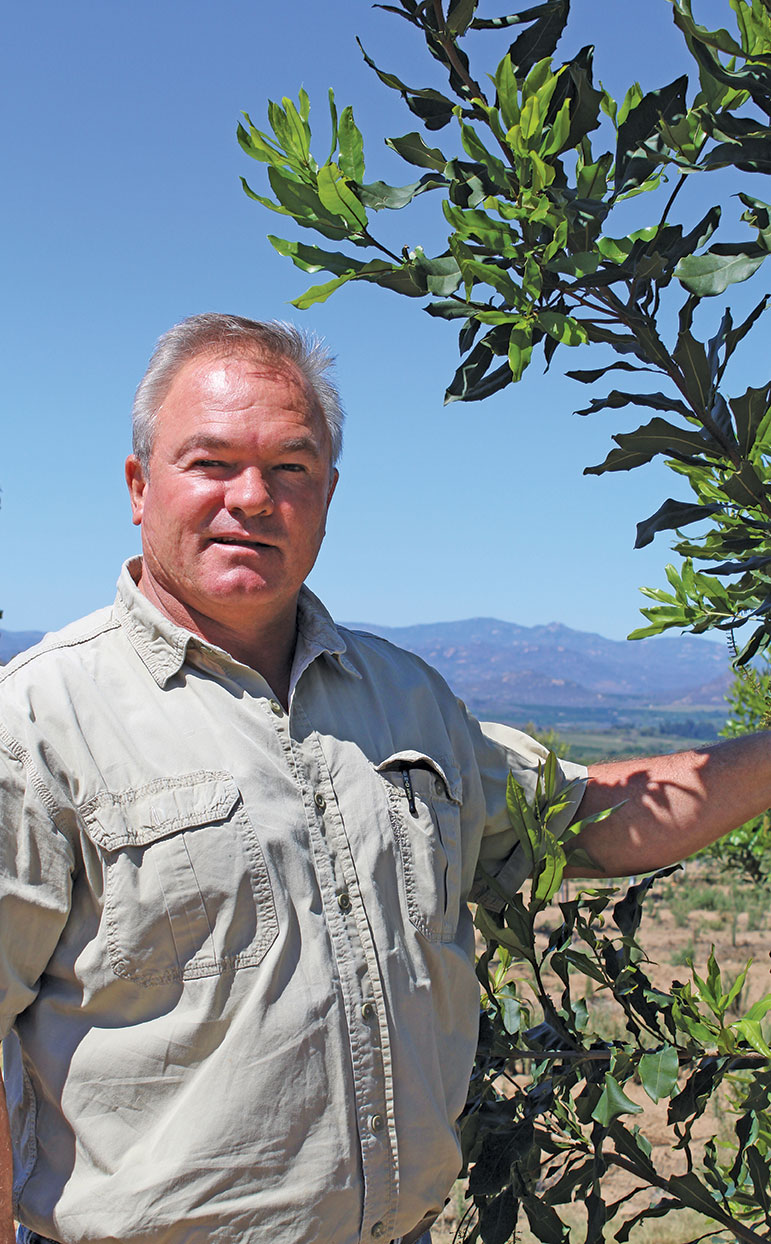
Irrigation volume depends on the size of the trees and the moisture levels in the soil, as determined by the tensiometer. He irrigates the two-year-old trees for about five hours a day during spring.
Traditionally, a farmer maintains balanced water and aeration conditions within the root zone of the crop by using extraction levels.
With continuous irrigation, he achieves these results through expansion and shrinkage of the wetted area while constantly applying water to a portion of the root zone.
Irrigation scheduling involves a two-zone strategy: daytime irrigation to wet the active root zone, and night-time irrigation to refill the buffer zone as required.
Crop water demand follows a typical bell curve over the consumptive period of the day, while water application stays constant. This entails an oversupply of water early and late in the day, with under-application during the peak water-consumptive period of the day. The wetted soil volume compensates for this.
To further increase the system’s efficiency, De Kock has buried the irrigation pipes 250mm deep.
“If the pipes are on the surface, they obstruct the nuts, preventing them from being blown into the machine during mechanical harvesting. This way, there’s no obstruction.”
He has also planted the new trees on ridges to create a topsoil layer of about 800mm.
“The tractor never goes onto the ridge, so it’s like an intensive-care unit of soil where the fertigation is placed only on that ridge. The entire ridge is full of nutrients and water, and there’s no compaction from the tractor.
“If we did decide to mechanise, the ridges would also make it easier as the nuts could just roll off. Every ridge is a contour, so there’s no soil erosion when we have flash floods or big storms.”
The irrigation system allows for fertigation, which is fully automated according to the trees’ requirements. The cultivars are fertigated differently, with the Beaumont and Nelmac cultivars each having a nitrate and sulphite tank for their respective fertiliser programmes.
The contents of the two tanks are kept separate, as they form a thick paste when mixed.
A blower in each tank constantly mixes the water to prevent the chemicals from sinking to the bottom and creating an uneven dosage.
De Kock can set the a month’s fertigation programme digitally, and the elements are drawn from the tanks and mixed into the main tanks that fertigate the orchards.
He notes that the filtration in this system has to be highly efficient as the dripper holes are fairly small. For this reason, he adds peroxide to the water to kill the algae. The water is kept at around 7,7pH.
Simple management
An advantage of the low-flow drip irrigation system is that it can be managed from a laptop.
“It’s a centralised system that’s managed in one place,” says De Kock.
“This makes it easier to irrigate in off-peak times, so I save on electricity. I irrigate between 10am and 5pm, 8pm and 5am, and over weekends. I have a Ruraflex Eskom point, and the saving due to this irrigation schedule has been huge.”
He adds that he has complete control over his fertigation and irrigation, as only one person needs to manage it.
“It’s either myself or my manager. There’s no opening and closing of taps in field, or relying on other people to get the timing right.”
On his micro-irrigated orchards fertiliser is applied by hand, a labour-intensive process. In contrast, the automation of the drip irrigation means that less labour is required out of season: only five people/70ha, as opposed to 10,5 people/70ha on the micro-irrigated orchards.
In addition to reducing power and labour costs, the system also saves water: the drip irrigation uses 10 000ℓ less water/ha than the micro-irrigated blocks do.
The low pressure required by the low-flow drip irrigation system enables De Kock to irrigate the entire 68ha in one go.
“If there’s a sudden heatwave, I can give the whole farm water. The micro-irrigation would require me to do it block by block, taking about three days to complete.
“The immediate availability of water results in more uniformity of the trees, as they all get the same volume of water at the same time. It makes me better prepared for heatwaves, which cause flower drop or stress in the trees.
“The improvement in the health of the trees is visible. The trees are uniform as they’re irrigated evenly. Their colour is also better than in the micro-irrigated blocks.”
Benefits
The system was implemented in 2016 and while the trees are only two years old, they are already in production. There is usually a four-year wait.
De Kock attributes the shorter cycle to the correct application of the irrigation and fertigation.
READ Home gardens: irrigate sensibly and economically
“Not only is it more even because of the way the system is designed, but the water absorption is more optimal. The trees are never over- or under-irrigated,” he explains. “It’s not water that kills roots but the lack of oxygen. You don’t drown the roots with drip irrigation.”
Due to the water rights he has for the farm and the savings from his new irrigation technology, De Kock is now able to plant more hectares.
“With low-flow drip irrigation I use a minimum of 50% less water than micro-irrigation. Overall, the system has made a huge difference to my bottom line. This is why it’s so important to constantly learn and choose your consultants carefully, to get the right advice, as well as access to the latest technology,” he says.
Email Dawid de Kock at [email protected].











